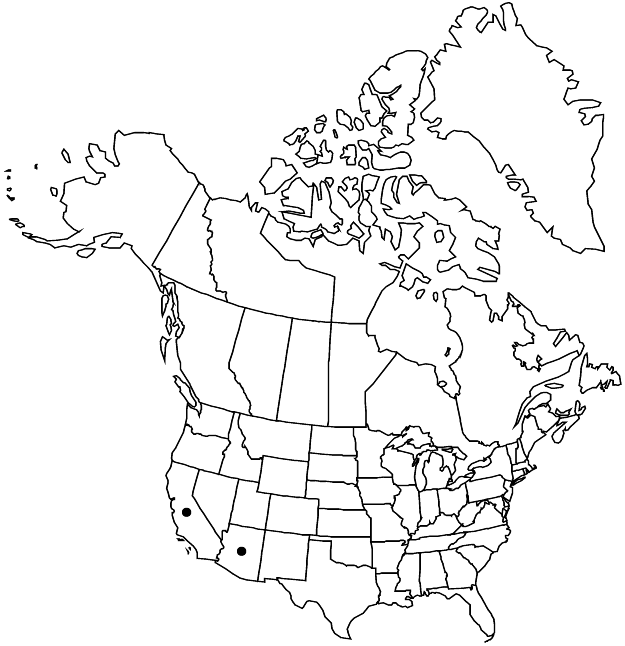Difference between revisions of "Eriogonum deserticola"
Proc. Amer. Acad. Arts 26: 125. 1891.
FNA>Volume Importer |
FNA>Volume Importer |
||
| Line 48: | Line 48: | ||
|publication year=1891 | |publication year=1891 | ||
|special status= | |special status= | ||
| − | |source xml=https://jpend@bitbucket.org/aafc-mbb/fna-data-curation.git/src/ | + | |source xml=https://jpend@bitbucket.org/aafc-mbb/fna-data-curation.git/src/f6b125a955440c0872999024f038d74684f65921/coarse_grained_fna_xml/V5/V5_599.xml |
|subfamily=Polygonaceae subfam. Eriogonoideae | |subfamily=Polygonaceae subfam. Eriogonoideae | ||
|genus=Eriogonum | |genus=Eriogonum | ||
Revision as of 20:09, 24 September 2019
Shrubs, erect or spreading, not scapose, 6–15(–18) × 10–20(–35) dm, white-tomentose to thinly floccose, greenish or grayish. Stems mostly spreading, without persistent leaf bases, up to 1/2 height or more of plant; caudex stems absent or spreading in moving sand; aerial flowering stems spreading, slender, solid, not fistulose, 1.5–4 dm, white-tomentose to thinly floccose, occasionally glabrate and light green. Leaves cauline, 1 per node, rarely fasciculate, quickly deciduous; petiole (0.3–)0.5–2 cm, tomentose to floccose; blade oblong-ovate to round-oblong or orbiculate, (0.3–)0.5–1.5(–3.5) × (0.5–)0.7–1.7(–2) cm, white-tomentose on both surfaces, margins plane, sometimes crisped. Inflorescences cymose, open, 15–90 × 20–100 cm; branches dichotomous, white-tomentose to thinly floccose, becoming floccose or glabrate and green; bracts 3, triangular, 0.5–1.5 mm. Peduncles absent or erect, slender, 0.1–0.5 cm, floccose to glabrate. Involucres 1 per node, turbinate-campanulate, 1.5–2.5(–3) × 1.3–1.6(–2) mm, thinly tomentose; teeth 4, erect, 0.3–0.5 mm. Flowers (2.5–)3–4(–4.5) mm; perianth greenish yellow to yellow, silky-villous abaxially; tepals connate proximally, monomorphic, oblong to oblong-obovate; stamens exserted, 2.5–4 mm; filaments pilose proximally. Achenes brown, 3–4(–4.5) mm, glabrous except for scabrellous beak.
Phenology: Flowering Jul–Jan.
Habitat: Deep moving sand dunes and sandy flats, desert scrub communities
Elevation: -60-200 m
Distribution

Ariz., Calif., Mexico (Baja California, Sonora).
Discussion
Eriogonum deserticola is found primarily in the moving sand dunes in the southern Salton Sea basin of extreme eastern San Diego and Imperial counties, California, with small populations in Yuma County, Arizona, and Baja California and Sonora, Mexico, where the species can be locally abundant. The larger plants are continually being buried and then uncovered by moving sand, revealing slender, grotesquely twisted trunks. R. S. Felger (2000) reported seeing some of the “exposed lateral roots” being up to six or more meters in length. It appears that the leaves are frequently stripped away by wind-blown sand.
Selected References
None.